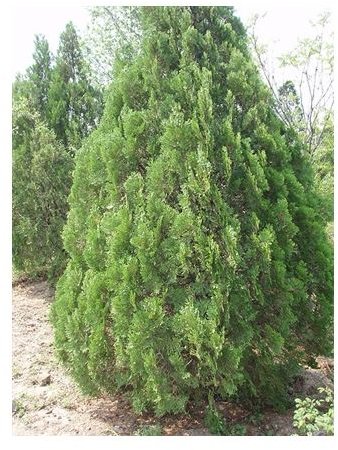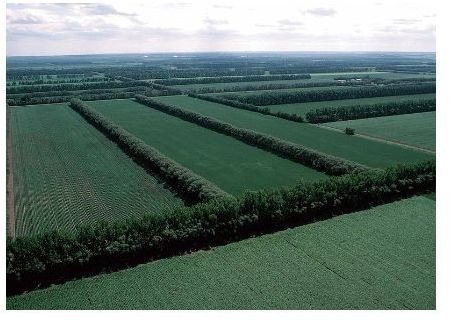Good Windbreak Shrubs: Shrubs for Windbreak
Good windbreak shrubs can protect a house, field, or property from snow and windstorms and reduce wind chill. Shrubs for windbreak are chosen for their density and low crowns. Evergreens are very popular for use as windbreak trees and shrubs, as there is a suitable evergreen for every climate.
Choosing Trees and Shrubs for a Windbreak
Trees and shrubs are both used for windbreaks. Shrubs can be planted at the base of trees with exposed trunks to augment their wind and snow protection abilities.
Of course, the plants chosen for a windbreak must be hardy to the particular planting zone. It would do no good to plant tropical bamboo in a harsh northern climate, or to plant a western cedar in a southern locale.
For maximum protection, windbreaks should be planted at a distance of 2-5 times the height of the shrubs or trees.
Things to Check When Choosing Windbreak Shrubs and Trees
Zone hardiness - If a plant is not suited to your growing zone, don’t try to make it work, because it will cause you more trouble than it is worth. Shopping local garden centers is your best bet. Look at what others are using.
Sun requirements - This is especially important if you are planting shrubs under trees. If they do not get enough light, they will stretch, and not provide decent coverage.
Mature size - Make sure the plant will fit into the space where it is planted, and perform as needed. Check mature height and width to assure the best fit.
Spacing - This determines how many of each plant you will need. Not spacing windbreak shrubs properly can cause them not to grow properly. Putting plants too close together can shorten their life.
Water and feeding requirements - Native shrubs and trees are best for a windbreak due to their being no need for supplemental water or feeding once they are established. Make sure you do not plant something that needs moist soil in a dry environment, or vice versa.
Popular Plants for a Windbreak
These are a few of the most popular windbreak shrubs and trees with growing information.

Arbovitae - Full Sun, partial shade, and shade; evergreen; zones 3-9; fast growth rate; 10-20 feet mature size. Dense growth, limbs all the way to the ground, eliminating the need for understory shrubs.
 Bamboo - Fast growth rate; full sun, partial sun and shade; evergreen; zones 6-10; 6-30 feet mature size. Bamboo makes an excellent windbreak due to its ability to bend in the wind. Running varieties can become very invasive, but provide a thicker and more stable windbreak.
Bamboo - Fast growth rate; full sun, partial sun and shade; evergreen; zones 6-10; 6-30 feet mature size. Bamboo makes an excellent windbreak due to its ability to bend in the wind. Running varieties can become very invasive, but provide a thicker and more stable windbreak.
 Juniper (Cedar) - Fast growth rate; full sun; evergreen; zones 4-9; 10-20 feet mature size. Junipers come in all shapes and sizes, and there are native varieties for every zone.
Juniper (Cedar) - Fast growth rate; full sun; evergreen; zones 4-9; 10-20 feet mature size. Junipers come in all shapes and sizes, and there are native varieties for every zone.

Boxwood - Moderate growth rate; full sun; zones 5-9; Moderate growth rate; 4-6 feet mature size. Dense, compact growth. Varieties available that keep their color during the winter.
 Colorado Blue Spruce - Moderate growth rate; full to partial sun; zones 3-7; 30-60 feet mature height with a spread of 10-20 feet; moist, fertile soil; deer resistant. Can be pruned to promote denser growth, but don’t need to be.
Colorado Blue Spruce - Moderate growth rate; full to partial sun; zones 3-7; 30-60 feet mature height with a spread of 10-20 feet; moist, fertile soil; deer resistant. Can be pruned to promote denser growth, but don’t need to be.
Credits
Information Sources:
Greenwood Nursery Site
Midatlantic Bamboo
Neighborhood Link
Disclaimer: Neither the author nor Bright Hub have received any compensation from these sites, and the use of information from these sites is not a recommendation of their services or products.
Photo Credits:
Field Windbreaks: public domain USDA / Wikimedia Commons
Arbovitae: Fangshong / Wikimedia Commons
Bamboo: public domain / Russia / Wikimedia Commons
Eastern Red Cedar: Pollinator / Wikimedia Commons
Boxwood: Frank Vincentz / Wikimedia Commons
Blue Spruce: public domain USDA / Wikimedia Commons
